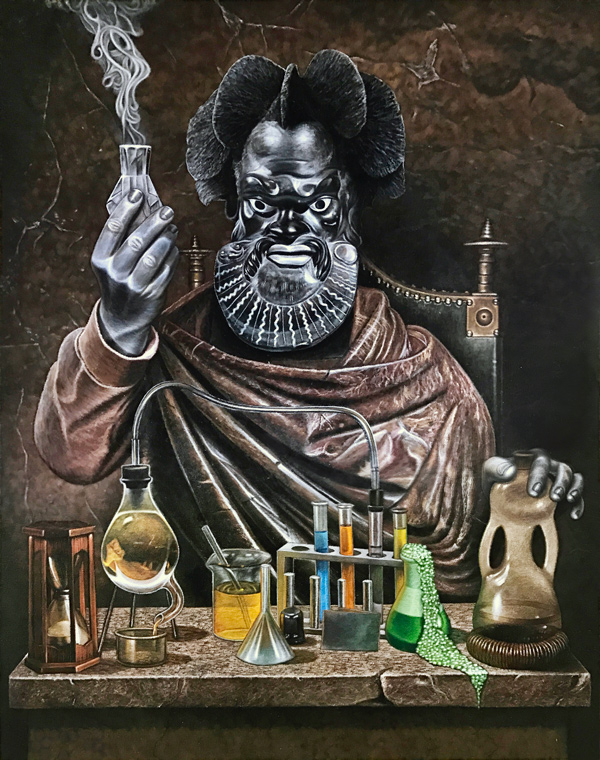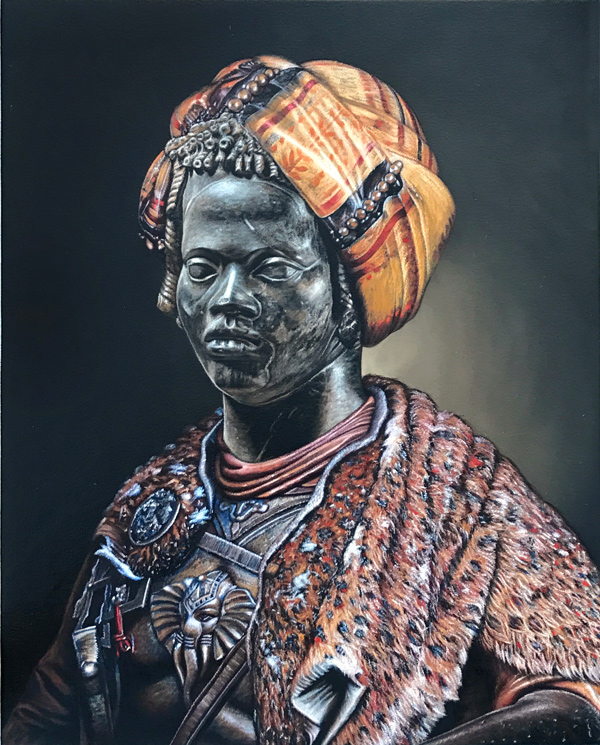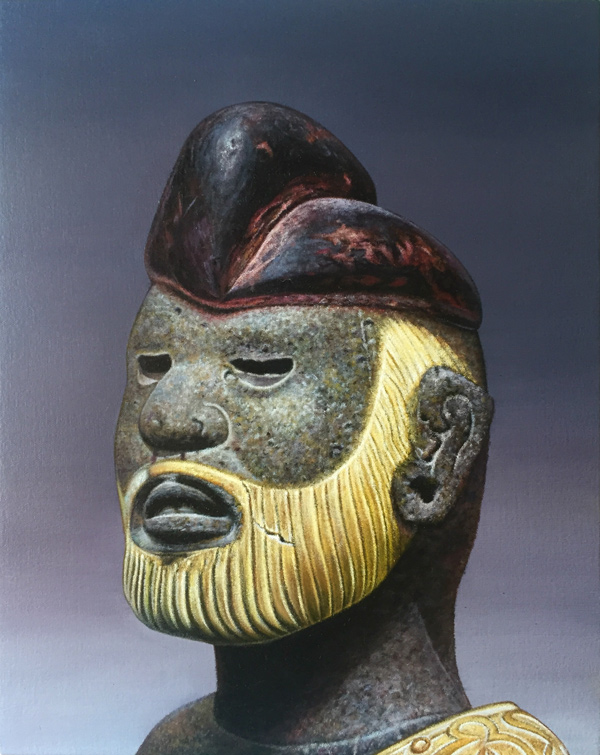Kajahl’s paintings vivify ancient statues, presenting them as dignified, mysterious multicultural personae. Embodying Western clichés from bygone eras, the characters in his current show titled “Unearthed Entities” include alchemists, explorers and conquerors. While these subjects assume old-fashioned European styles of posed oil portraiture, their carved facial features appear mostly African or Middle Eastern.

Kajahl, Alchemist II (2017), courtesy of the artist and Richard Heller Gallery.
Kajahl’s personified artifacts appear to be embracing European style in the same way that artists such as Picasso have appropriated African artifacts and styles. His portraits thus function as reclamations of Afro-Asiatic identity within Western tradition.

Kajahl, Baroque Classic (2017), courtesy of the artist and Richard Heller Gallery.
They could also be interpreted as self-portraits of an artist making sense of his own mixed lineage. In his artist statement, Kajahl notes the ambiguous space he transits between his parents’ histories, never fully identifying with either, “as the son of a nomadic Italian-American mother and Belizean Rastafarian father.” Aligning with his depicted personages’ enigmatic presences, titles like Void Space (2014) and Ethereal (2014) bespeak mystical equivocality.

Kajahl, Void Space (2014), courtesy of the artist and Richard Heller Gallery.
Kajahl’s homogenized subjects evoke the fragmented experience of diaspora haunted by plurality of heritage. They suggest identities clouded by the passage of time and stereotypical pigeonholing. Africa is a huge landmass encompassing diverse cultures and peoples; but owing to migration, colonization and Western ideals, it is often agglomerated into a single unit tinged with mythical “Dark Continent” inscrutability. (An ideal example of this phenomenon within the art world is Robert Storr’s controversial African Pavilion at the 2006 Venice Biennale.)

Kajahl, Ethereal (2015), courtesy of the artist and Richard Heller Gallery.
While the majority of “Unearthed Entities” depict hybridized individuals, a series of studies most effectively presents a disjunctive sense of identity. Each of these portrays a different Egyptian, Mesoamerican, Middle Eastern, or European artifact fragment. Arranged salon-style, together they reveal the mystical indefiniteness that often results from removal of context.

Kajahl, Command and Conquer (2017), courtesy of the artist and Richard Heller Gallery.
Despite surfeits of historic and genealogical postulations, the pedigree of any living person is similar to that of an artifact. Kajahl’s imaginative composite portraits speak to the fact that once ancestral connections are severed and experiences forgotten, vague origin myths take on lives of their own.
Kajahl, “Unearthed Entities,” September 9 – October 28, 2017 at Richard Heller Gallery, 2525 Michigan Ave. #B-5A, Santa Monica, CA 90404, richardhellergallery.com



















Excellent, seminal work. Wonderful article